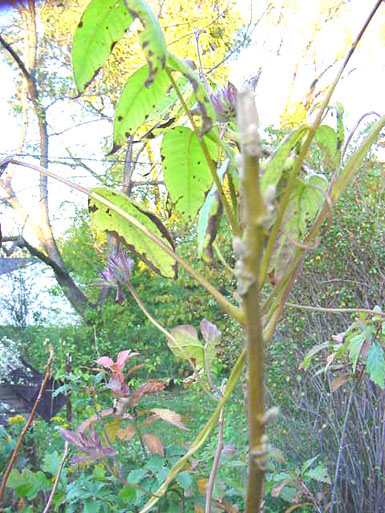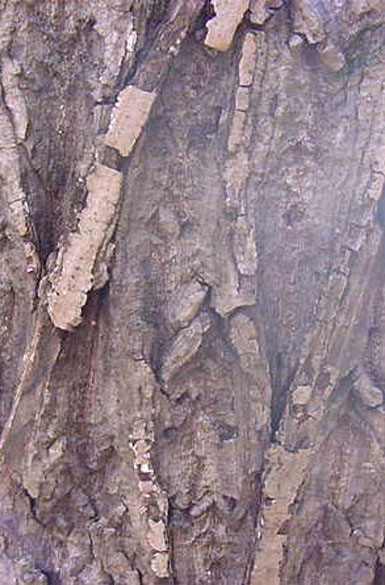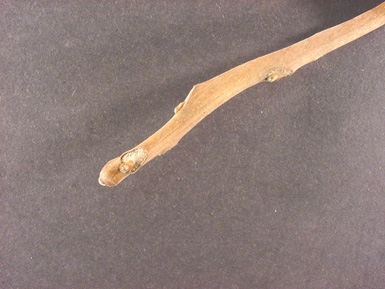Form: This is a small to medium-sized tree ranging from 40-60 ft. in height. It has a spreading crown and often develops a twisted trunk.
Leaves:
Arrangement: alternate; odd-pinnately compound; 11-19 leaflets
Shape: oblong-lanceolate
Margin: serrate
Texture: rachis is pubescent; leaflets rugose above, pubescent below

Bark: It has light gray smooth bark when young and develops shallowly furrowed with broad ridges when older. The ridges are often flattened with a lighter brown color *.

Twigs and buds: The twigs are stout, lenticels, and have a chambered pith. Terminal buds are elongated and blunt at the tip.

Flowers and fruit: The oblong shaped sticky fruit can be attached individually or in clusters.
Distinguishing characteristics: Look for the flattened lighter colored ridges and the different shaped nut to distinguish this species from black walnut.
Range: It has a large range concentrated in the Central Hardwood Region extending into New England and the southern Lake States. However, very few large populations exist.
Silvics: It is shade-intolerant and prefers deep moist loams, but can also be found on dry limestone rich sites. It is never found in pure stands.
Ecological and cultural importance: Populations of this species have been severely hindered dying by a canker causing fungus.